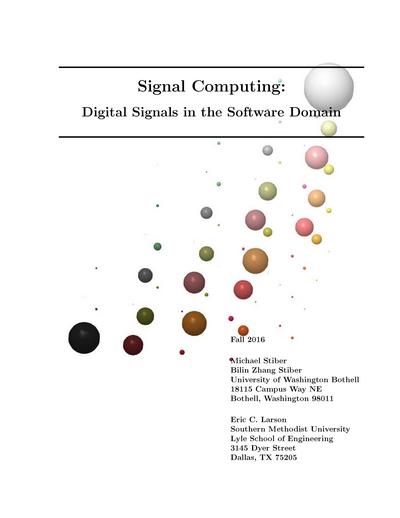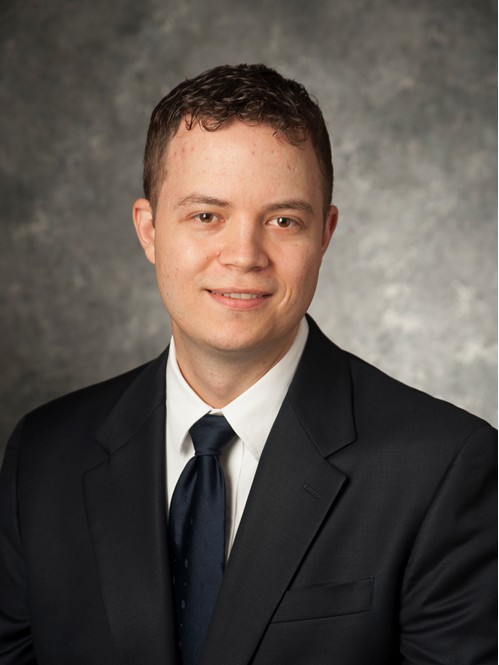
Signal Computing: Digital Signals in the Software Domain
This book teaches students how digital signals are captured, represented, processed, communicated, and stored in computers.
Tag(s): Signal Processing
Publication date: 01 Dec 2016
ISBN-10: n/a
ISBN-13: n/a
Paperback: 206 pages
Views: 11,699
Type: Textbook
Publisher: n/a
License: Creative Commons Attribution-ShareAlike 4.0 International
Post time: 31 May 2017 11:00:00
Signal Computing: Digital Signals in the Software Domain
 This book teaches students how digital signals are captured, represented, processed, communicated, and stored in computers.
This book teaches students how digital signals are captured, represented, processed, communicated, and stored in computers.
Publication date: 01 Dec 2016
ISBN-10: n/a
ISBN-13: n/a
Paperback: 206 pages
Views: 11,699
Document Type: Textbook
Publisher: n/a
License: Creative Commons Attribution-ShareAlike 4.0 International
Post time: 31 May 2017 11:00:00
Share — copy and redistribute the material in any medium or format
Adapt — remix, transform, and build upon the material for any purpose, even commercially.
The licensor cannot revoke these freedoms as long as you follow the license terms.
Click here to read the full license.
Stiber, et al. wrote:Digital signals place great demands on processing power, network bandwidth, storage capacity, I/O speed, and software design. As a result, signal computing is a great laboratory for exercising the full range of knowledge of computer science.
In this book, you will learn how digital signals are captured, represented, processed, communicated, and stored in computers. The specific topics we will cover include: physical properties of the source information (such as sound or images), devices for information capture (microphones, cameras), digitization, compression, digital signal representation (JPEG, MPEG), digital signal processing (DSP), and network communication. By the end of this book, you should understand the problems and solutions facing signal computing systems development in the areas of user interfaces, information retrieval, data structures and algorithms, and communications.
Tweet
About The Author(s)
Eric C. Larson (@ec_larson) is an Assistant Professor in the Department of Computer Science and Engineering in the Bobby B. Lyle School of Engineering, Southern Methodist University. Dr. Larson has developed a number of mobile health technologies; including medical applications that use mobile phone’s to track baselines for patients with asthma, COPD, cystic fibrosis, and neonatal jaundice. His work in mobile health is the first of its kind to seek FDA approval and is creating a new paradigm for medical sensing out of the doctor’s office. Dr. Larson’s main research interests are in machine learning, sensing, and signal & image processing for ubiquitous computing applications, in particular, for healthcare and environmental sustainability.

Eric C. Larson (@ec_larson) is an Assistant Professor in the Department of Computer Science and Engineering in the Bobby B. Lyle School of Engineering, Southern Methodist University. Dr. Larson has developed a number of mobile health technologies; including medical applications that use mobile phone’s to track baselines for patients with asthma, COPD, cystic fibrosis, and neonatal jaundice. His work in mobile health is the first of its kind to seek FDA approval and is creating a new paradigm for medical sensing out of the doctor’s office. Dr. Larson’s main research interests are in machine learning, sensing, and signal & image processing for ubiquitous computing applications, in particular, for healthcare and environmental sustainability.
Bilin Stiber is a Lecturer at the University of Washington Bothell. She received an MS and Ph.D. from the Department of Biophysical Engineering, Osaka University (Osaka, Japan), where she was subsequently an Assistant Professor. She also holds BS in physics. She was a research scientist at The Chinese University of Hong Kong and the Hong Kong University of Science & Technology, and a research scientist in the Electrical Engineering and Computer Sciences Department at the University of California, Berkeley. Her research interests lie in the area of signal processing theory and applications, especially time-frequency distributions and applications to speech and biosignals.
Bilin Stiber is a Lecturer at the University of Washington Bothell. She received an MS and Ph.D. from the Department of Biophysical Engineering, Osaka University (Osaka, Japan), where she was subsequently an Assistant Professor. She also holds BS in physics. She was a research scientist at The Chinese University of Hong Kong and the Hong Kong University of Science & Technology, and a research scientist in the Electrical Engineering and Computer Sciences Department at the University of California, Berkeley. Her research interests lie in the area of signal processing theory and applications, especially time-frequency distributions and applications to speech and biosignals.
Michael D. Stiber (@stiber) is Professor in the Computing & Software Systems Division at the University of Washington Bothell. He is a past member of the executive committee of the Seattle section of the IEEE Computer Society, has served on organizing committees, chaired sessions, and reviewed papers for neural network and computational neuroscience conferences, and is a reviewer for numerous journal publications. His long-term research goal is to understand the computational principles underlying biological nervous system function for application to machine intelligence.

Michael D. Stiber (@stiber) is Professor in the Computing & Software Systems Division at the University of Washington Bothell. He is a past member of the executive committee of the Seattle section of the IEEE Computer Society, has served on organizing committees, chaired sessions, and reviewed papers for neural network and computational neuroscience conferences, and is a reviewer for numerous journal publications. His long-term research goal is to understand the computational principles underlying biological nervous system function for application to machine intelligence.